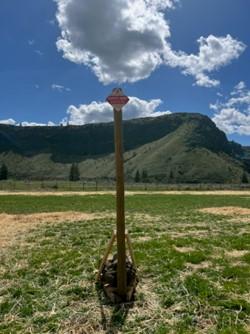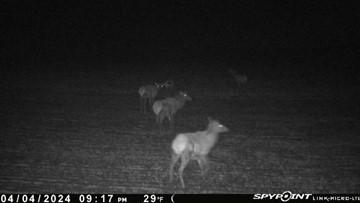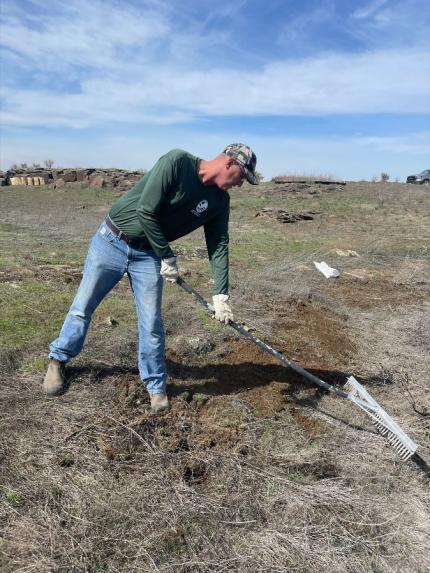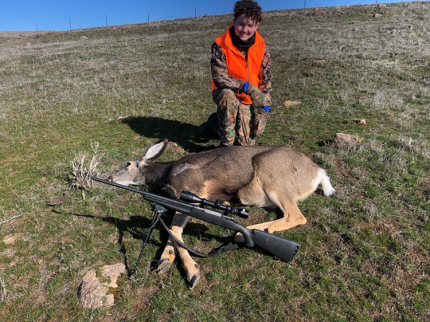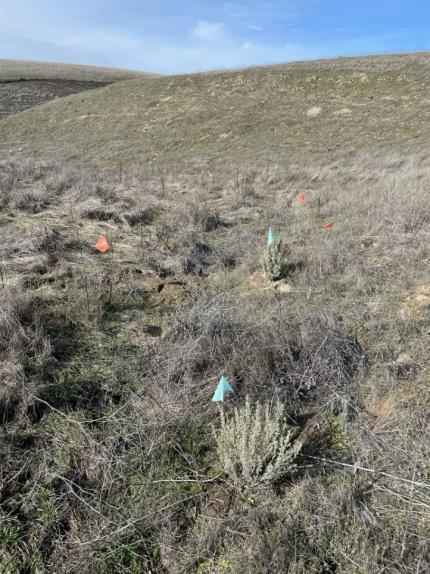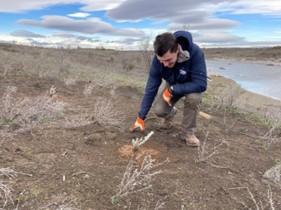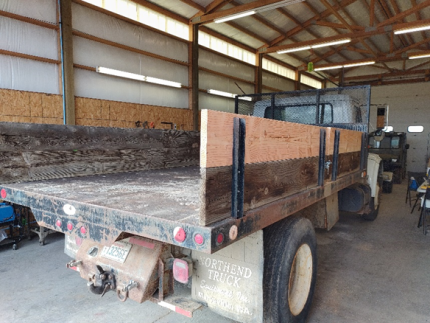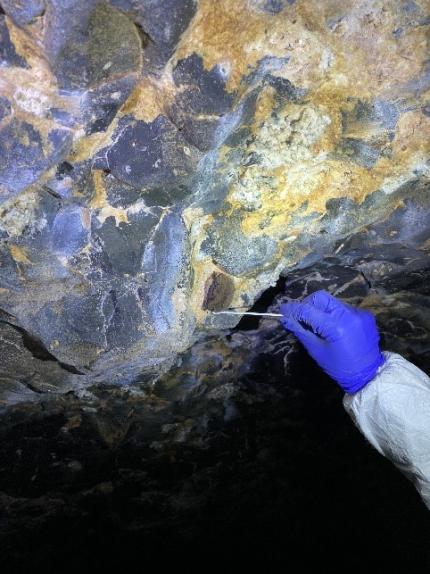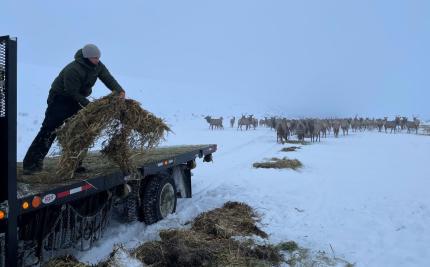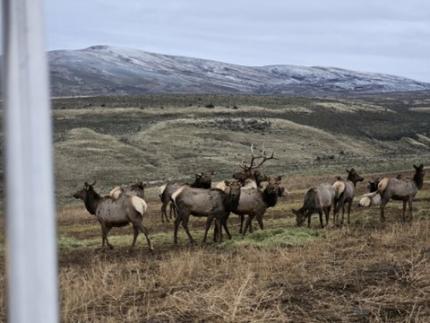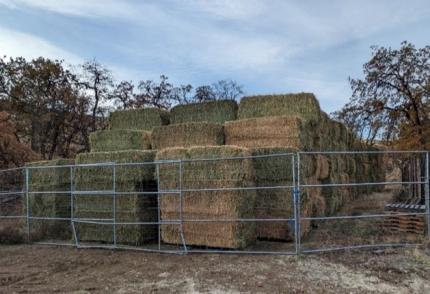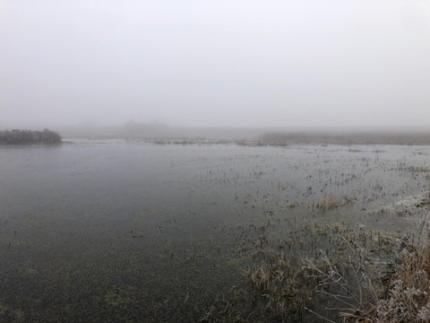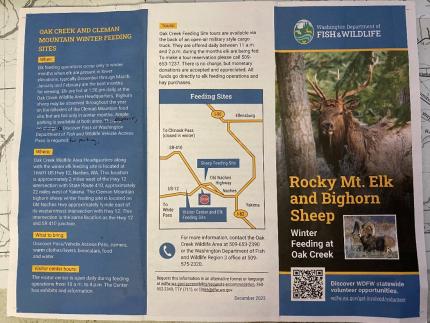Biweekly report May1-15 2024 - Region 3 (South Central)
Managing Wildlife Populations
Townsend Ground Squirrel Monitoring: District 8 Wildlife Biologist Wampole and Assistant Wildlife Biologist Moore continued to survey for Townsend ground squirrel colony sites. Ground squirrels were once common. Washington Department of Fish and Wildlife has noticed declines in historically occupied sites. To better assess this, biologists have been working to assess historic site status and identify new locations of colonies to determine if breeding is occurring.

District 8 Bat Monitoring: District 8 Wildlife Biologist Wampole and Assistant Wildlife Biologist Moore started monitoring the arrival of bats to summer maternity sites. Maternity sites are monitored for white-nose syndrome and population trends. There are two key sites receiving experimental vaccinations and treatments to combat the deadly fungal disease.
Teanaway Community Forest Spotted Owl Surveys: District 8 Wildlife Biologist Wampole, Habitat Biologist Meyers, and Diversity Division Wildlife Biologist Kohler joined forces to begin the deployment of autonomous recording units (ARU’s) for monitoring spotted owl populations in the Teanaway Community Forest. ARU’s automatically record calls of birds and other species in the area. Assessment of the audio recordings will allow biologists to determine the presence of spotted owls and determine sex of those individuals from their call patterns.
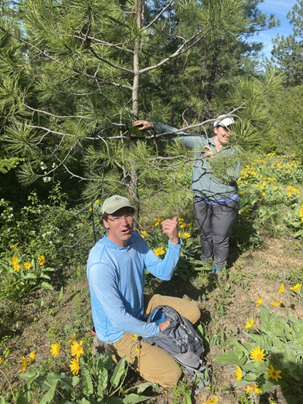
Bighorn Sheep Monitoring: District 8 Wildlife Biologist Wampole and Assistant Ungulate Specialist Kyle conducted surveys for new lambs in the Movi-positive Yakima herd. Wampole and Kyle also worked to retrieve and sample a natural mortality of the Movi-positive ewe from the Umtanum South sub-population where active infections were found in the winter 2024 capture and test effort.

Burrowing Owl Transmitter Project: District 4 Wildlife Biologist Fidorra received locations from partner researchers regarding two burrowing owls with transmitters in unusual locations in Douglas and Yakima counties. Despite multiple attempts of various efforts using UHF, playback, and visual searches, neither owl was located. Due to the technology, it can be difficult to track birds to a specific location so more data will need to come in from the satellite before knowing the location or fate of these two owls.

Burrowing Owl Nest Project: District 4 Wildlife Biologist Fidorra and Assistant Wildlife Biologist Hoffman began nest checks at artificial burrow sites near Pasco. Most nests have already hatched with many young clutches detected. After a mild winter, many owls were onsite early, and breeding is ahead of schedule with most available sites occupied.
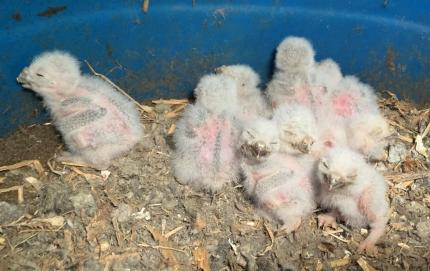
White-nose Syndrome Probiotic Study on Bats: District 4 Wildlife Biologist Fidorra and Assistant Wildlife Biologist Hoffman, and Sunnyside Snake River Wildlife Area Manager Kaelber assisted staff members and partners to capture, assess, band, and tag little brown and Yuma myotis bats at a colony in Yakima County. This location will be used as a control site for the probiotic study attempting to identify preventative treatments for white-nose syndrome. Approximately 60 bats were sampled.
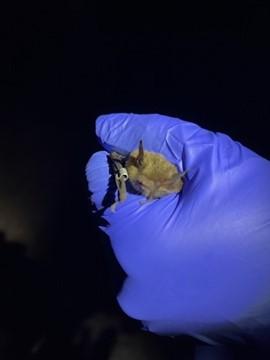
Porcupine Rescue: District 4 Wildlife Biologist Fidorra responded to a call about a porcupine that had been staying under a car for several days on a busy street in Pasco with no suitable habitat in near vicinity. Fidorra and Conflict Specialist Hand quickly trapped the animal and moved it to a nearby natural area.

Diversity Grant Review: District 4 Wildlife Biologist Fidorra reviewed and scored applications for the new wildlife diversity grants.
Providing Recreation Opportunities
Wenas Wildlife Area Durr Road Shooting Range Coordination: Wenas Wildlife Area Manager Gray, Archeologist Barrick, and Environmental Engineer Hansen met with members of the Yakama Nation to discuss the Durr Road Shooting Range. Gray expressed how the range will improve safety, lower the risk of wildfires, and lower the amount of garbage left behind by providing the public a developed site to use. They discussed the importance and history behind harvesting food for the Yakama Nations. They also discussed the need for improvements on communication. The meeting went well, and it was a good opportunity to discuss target shooting and the Durr Road Target Shooting Range. The new range should be completed and ready for use in June of 2024.
Oak Creek Wildlife Area Winter Closures Open: Oak Creek Wildlife Area staff members and volunteers opened all winter closure public access gates on May 1 at 6 a.m. Over 100 vehicles, various hikers, and horseback riders were waiting at the gates at 6 a.m. to enter the winter closure areas to search for elk antler sheds. Winter closures on the Oak Creek Wildlife Area aid in the protection of wintering wildlife, specifically elk, that are in high concentrations near winter feed sites and are within their winter recovery period.
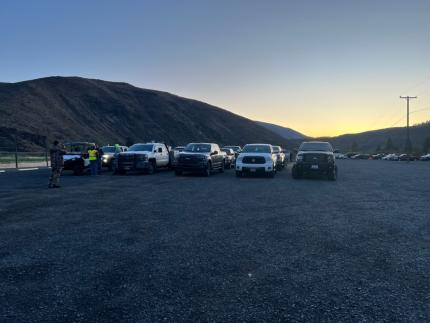
Providing Conflict Prevention and Education
Rattlesnake Hills Elk: District 4 Wildlife Conflict Specialist Hand monitored elk activity and conducted late night hazing activities near the border of the Hanford National Monument. Several landowner meetings were conducted to coordinate damage permit hunting and hazing activities.
Corral Canyon Elk Area Summer Bull Permits: District 4 Wildlife Conflict Specialist Hand delivered Damage Prevention Permits (DPP) to landowners in elk area 3721. These permits were the first to be developed and issued from the new Damage Permit System platform and will be used to pressure elk away from commercial crops.
Ice Harbor Deer: District 4 Wildlife Conflict Specialist Hand monitored deer activity and damage impacts at a large tree fruit and blueberry farm near Ice Harbor Dam along the Snake River.
Prosser Marmots: District 4 Wildlife Conflict Specialist Hand received and responded to a complaint of yellow-bellied marmots causing damage at the Whitstran Elementary School near Prosser. They provided information on deterrence strategies and contact information for local Wildlife Control Operators.
Oak Creek Wildlife Area Signage: Oak Creek Wildlife Area Assistant Manager Charlet had four signs updated and reprinted for various locations on the wildlife area. These signs have been updated to follow the new Washington Department of Fish and Wildlife sign standards and guidelines.


Conserving Natural Landscapes
Wenas Wildlife Area – Sheep Company Target Shooting Clean-Up: Wenas Wildlife Area Lands and Recreation Specialist Frame collected 360 pounds of trash and target shooting material from the Sheep Company Target Shooting Range. Notable items were a toilet and dishwasher.

Wenas Wildlife Area Spring Weed Treatments: Wenas Wildlife Area staff members continue to treat the wildlife area for noxious weeds. This time of year, common targets are Scotch thistle, Canada thistle, and whitetop. Preventing the encroachment of these noxious weeds is an essential aspect of maintaining the natural landscapes on the wildlife area.
Oak Creek Wildlife Area Noxious Weed Control: Oak Creek Wildlife Area Assistant Manager Charlet and Natural Resource Worker O’Brien continue to chemically control noxious weeds on the Cowiche and Oak Creek units. Spot spraying reduces the presence of Scotch thistle and other various noxious weeds on Washington Department of Fish and Wildlife lands and helps conserve and maintain natural landscapes.
Private Land Shrub Plantings: Region 3 Private Lands Biologist Manderbach and Wildlife Biologist Fidorra planted native shrubs on private lands in Franklin County that burned in 2020 and lost most all shrub cover. Sagebrush plantings from the year prior were doing well, but other species planted appeared to be browsed fatally by deer and cattle. New shrubs were added to augment the plot and browse protections will be implemented.

L.T. Murray Wildlife Area Weed Control: L.T. Murray Wildlife Area Assistant Manager Winegeart hired Central Valley Helicopters to aerially treat 64 acres of the perennial weed, whitetop (Cardia draba), within the footprint of the 2022 Vantage Highway Fire. The lack of overhead cover makes this a good time to reach and treat remote weed populations.

Teanaway Valley Unit Restoration Site: L.T. Murray Wildlife Area Manager Morrison and Assistant Manager Winegeart walked the L.T. Murray Wildlife Area’s Teanaway Valley Unit. They accessed the unit’s need for future attention. Restoration has been ongoing on the unit for several years, but the Recreation and Conservation (RCO) Grant is now closed. Wildlife area staff members will work hard to protect the work done and ensure success of the site’s structural improvements and weed control efforts performed over the years by Mid-Columbia Fisheries.

South Ridge Road Site Visit: Region 3 Private Lands Biologist Manderbach met with South Yakima Conservation District staff members, an engineer from the Central and East Klickitat Conservation District, a member of the Audubon Society, and the landowner of the property enrolled in access as the South Ridge Road property. The meeting was focused around the development of a natural spring to increase flow and provide a solid pool of water for wildlife use and to allow for future habitat development.
Past habitat projects were also viewed and plans to expand on them were discussed. Senior Program Manager Hulett from Audubon discussed plans for sage grouse surveys on this property as well as others in Yakima and Benton counties. The spring development project should get rolling this summer which would allow for habitat expansion later this year or next year.

Providing Education and Outreach
Salmon Celebration: Sunnyside Snake River Wildlife Area Manager Kaelber and Natural Resource Technician Edwards presented at a recent salmon release event in Sacajawea Park. Students learned about the types of animals found in Washington and were able to touch furs, skulls, and antlers.

Conducting Business Operations and Policy
Wenas Wildlife Area RCO Grant Application: Habitat Specialist Miller has been working on a grant application through the Recreation and Conservation Office (RCO). Grants through RCO require a multi-step process that involves several different presentations of proposed projects. Funds awarded through these grants are often used to acquire new lands for wildlife areas and supplement funds for the improvement of existing sites.

Other
American Badger Sighting: Natural Resource Specialist Frame spotted an American badger in the Cleman Mountain area.

Quilomene Unit Visitors: Domestic bison from a neighboring landowner's pasture made their way to WDFW's L.T. Murray Wildlife Area Quilomene Unit in search of green grass and water. Their white faces give them an awe-inspiring presence when meeting face to face on the landscape. It was fun while it lasted but the visitors had to return home in absence of a grazing permit.

